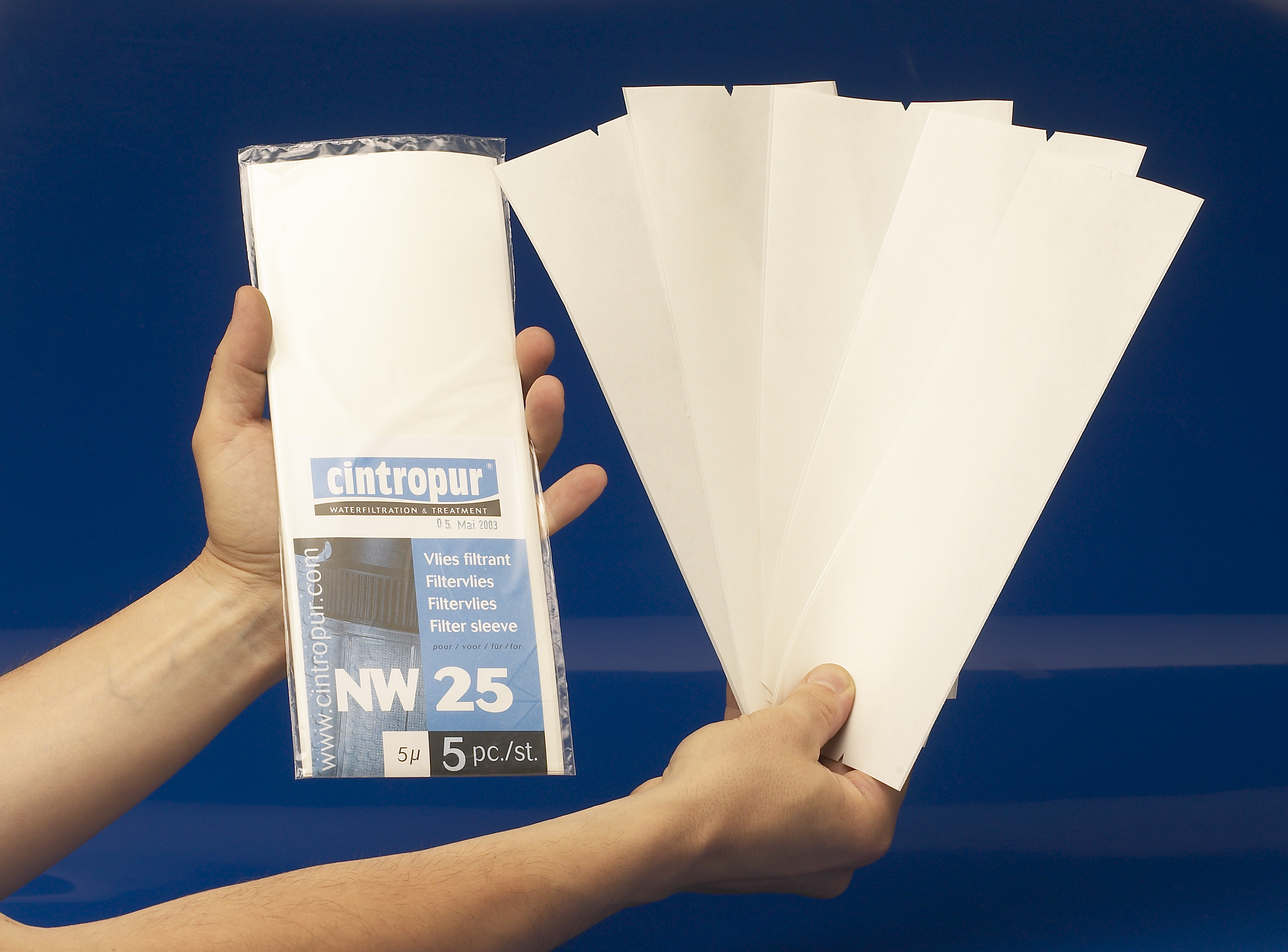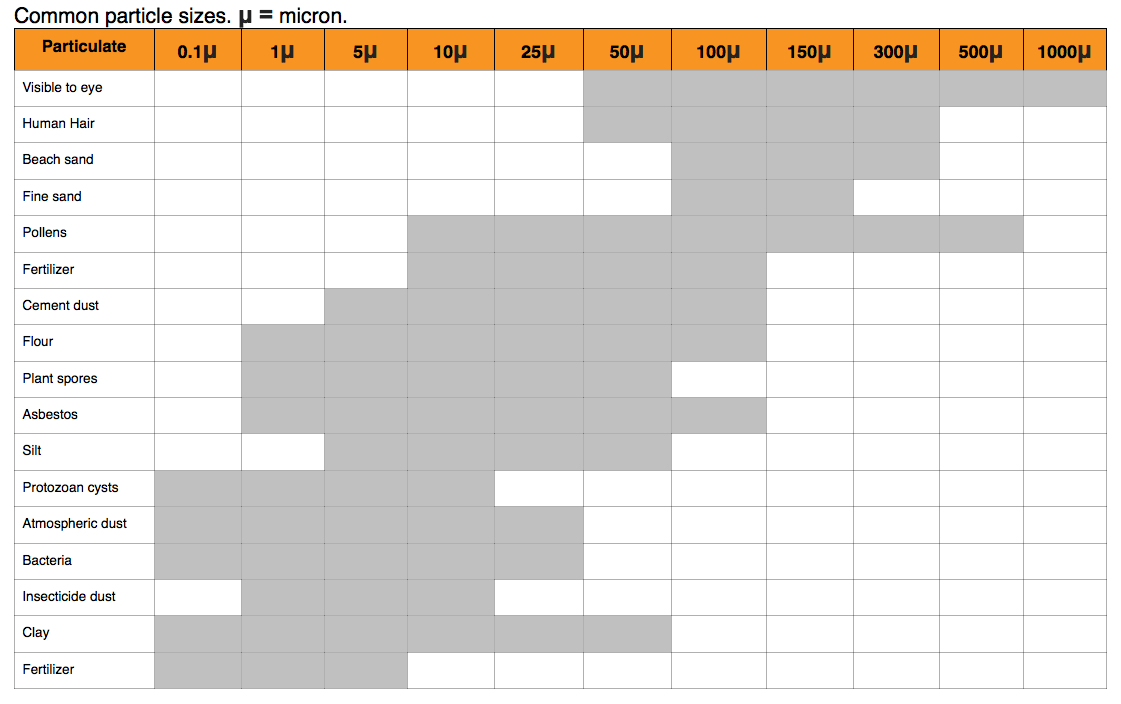Filter Sleeve Range
1 Micron Polypropylene Disposable Water Filter Sleeves, 5 per pack.
Recommended for Town Water Supplies, Giardia & Cryptosporidium filtration, protection of U.V, ultrafiltration and reverse osmosis membranes.
5, 10, 25, 50 & 100 Micron Polyester Disposable Water Filter sleeves, 5 per pack.
5 micron: Recommended for coarsest protection of U.V, ultrafiltration and reverse osmosis membranes.
10 micron
25 micron: This is the standard sleeve supplied with all filters. It is a good choice for rainwater supplies.
50 & 100 micron: Rainwater pre-filtration and irrigation.
150 & 300 Micron Nylon Washable Water Filter Sleeves, 5 per pack.
150 & 300 micron: These sleeves are made of nylon and thus washable. Ideal for irrigation, protecting spray nozzles and for coarse pre-filtration.
Instructions on how to change your sleeve can be found in our BLOG.
Sleeve selection
Water sources contain varying levels of suspended particles of all sizes and shapes, both organic and inorganic. Water Filters remove particles from water as it passes through a porous medium (the filter sleeve) and the effectiveness of filtration obviously depends on the volumes and size of the particles in the water. The filter separation process begins with identifying the particular properties of the materials to be separated and the differences between those properties such as density and particle size.
A coarse, “roughing” or pre-filter sleeve (300 to 50 micron) will remove larger particles such as dirt and leaf matter but will not remove fine sediment. However, although only removing coarse material, it can still reduce the load on the treatment processes that follow. For example, pre-filtration upstream of fine filters, activated carbon treatment media or U.V systems can reduce how often these need to be replaced or the effectiveness of their treatment. On the other hand, if a single fine (1 to 5 micron) filter was expected to handle both large particles and finer sediment it would block prematurely. It is always advisable to filter in stages.
Filter pore size selection may be a case of trial and error to find the best results and may require single or multiple stages. See the particle size chart below as a guide.





